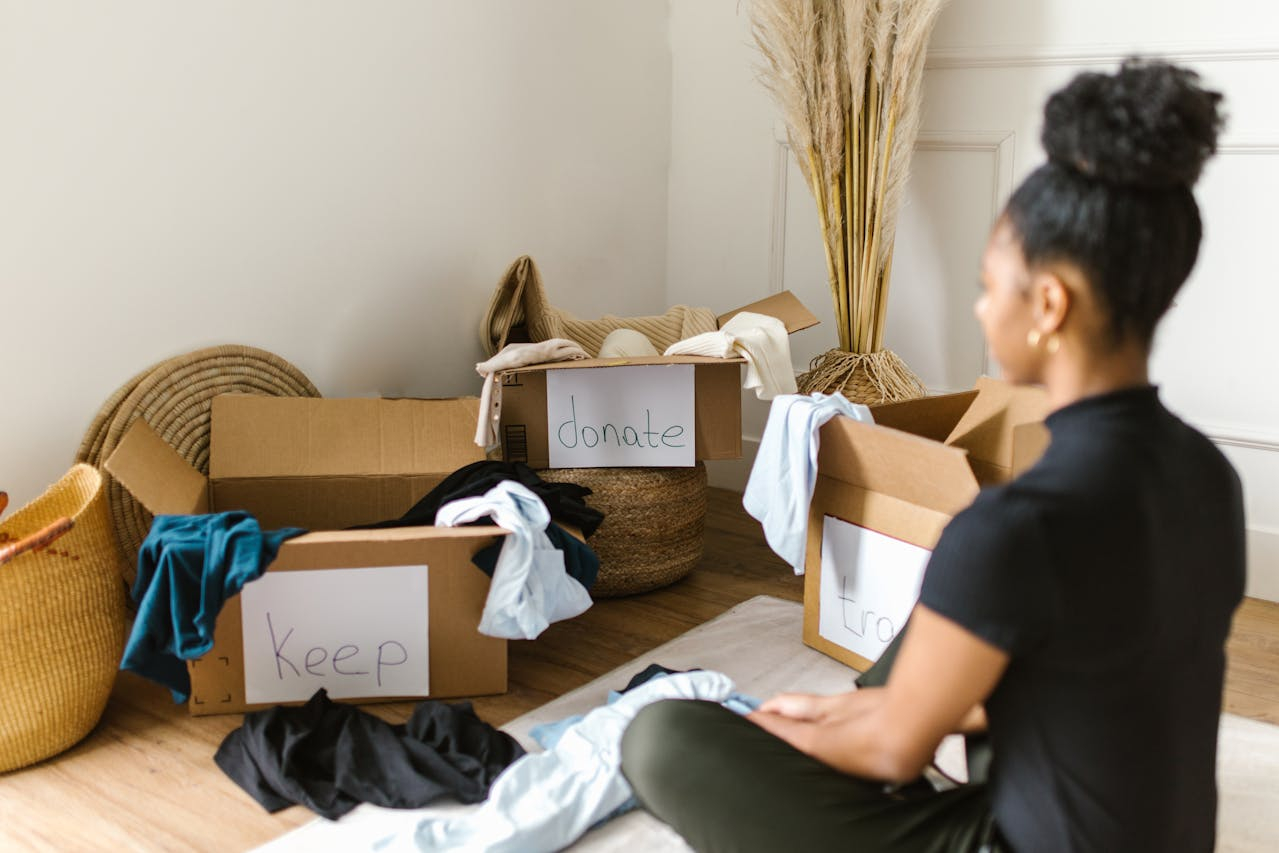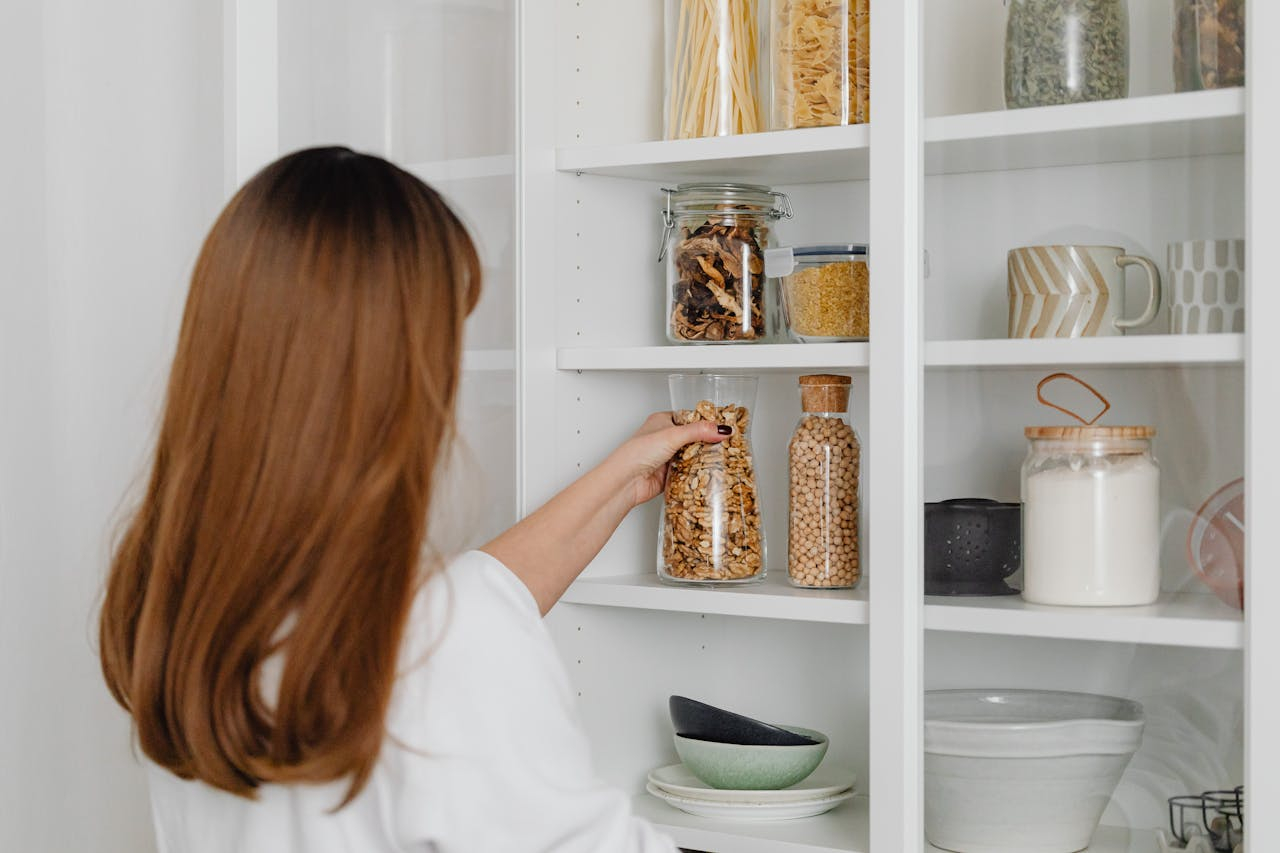Decluttering can feel like a huge task, but with the right approach, it doesn't have to be overwhelming. Whether you're buried in stuff or just want a more organized home, this guide is perfect for beginners. We'll walk you through practical steps to declutter your space, room by room. But first, let’s explore the benefits of decluttering your life.
The Benefits of Decluttering Your Life
Decluttering isn’t just about tidying up; it’s about creating a space that supports your well-being. Here are some key benefits:
-
Reduced Stress: A clutter-free environment can significantly reduce stress and anxiety.
-
Increased Productivity: An organized space allows you to focus better and be more productive.
-
More Space: Clearing out unnecessary items frees up space for the things you truly need and love.
-
Improved Mental Health: Letting go of physical clutter can help you release emotional baggage.
-
Easier Cleaning: With fewer items to manage, cleaning becomes quicker and more efficient.
1. Begin with Small, Manageable Tasks
Starting small is key to avoiding burnout. Pick a small area like a single drawer, shelf, or countertop to begin with. This way, you’ll see progress quickly, which will motivate you to keep going.
Tip: Spend just 15 minutes a day on decluttering. These short bursts of effort will add up over time.
2. The Four-Box Method
The Four-Box Method is a straightforward way to sort through your stuff. Label four boxes as Keep, Donate, Trash, and Relocate. As you go through each item, decide which box it belongs in.
-
Keep: Items you use and love.
-
Donate: Items in good condition that you no longer need.
-
Trash: Items that are broken or no longer usable.
-
Relocate: Items that belong in another room.
3. Try the KonMari Method
Marie Kondo's KonMari Method focuses on keeping items that "spark joy." Gather all similar items together, then go through each one, asking if it brings you joy. If not, thank it for its service and let it go. Here are a few more tips from her book, "The Life-Changing Magic of Tidying Up":
-
Tidy by Category, Not Location: Start with clothes, then move on to books, papers, and so on.
-
Fold Clothes Upright: Store clothes vertically in drawers to save space and make everything visible.
-
Respect Your Belongings: Treat your items with care, even as you decide to part with them.
4. Declutter by Category
Instead of decluttering room by room, try tackling categories like clothing, books, papers, and miscellaneous items. This method helps you see how much of each type of item you have, making it easier to decide what to keep.
5. Use a Decluttering Checklist
A checklist can keep you organized and on track. Here are some practical checklists for different areas of your home:
Kitchen
-
Countertops: Remove unnecessary items and clean.
-
Cabinets: Discard expired food and donate unused items.
-
Drawers: Organize utensils and gadgets.
-
Pantry: Sort and label food items.
-
Fridge/Freezer: Throw out expired items and clean shelves.
Living Room
-
Surfaces: Clear coffee tables and end tables.
-
Shelving: Organize books, decor, and electronics.
-
Furniture: Assess and remove excess furniture or decor.
Bedroom
-
Closet: Donate clothes not worn in the last year.
-
Dresser: Sort and fold clothing.
-
Nightstands: Clear and organize.
-
Under Bed: Remove and store items properly.
Bathroom
-
Countertops: Clear and clean.
-
Medicine Cabinet: Discard expired medications and products.
-
Shower/Bathtub: Remove empty bottles and clean surfaces.
-
Drawers/Cabinets: Organize toiletries and towels.
Home Office
-
Desk: Clear off unnecessary items and organize essentials.
-
Files: Sort, shred, and file important documents.
-
Supplies: Organize stationery and office supplies.
-
Electronics: Sort and label cables and discard obsolete tech.
Garage
-
Tools: Organize and store properly.
-
Shelving: Clear out unused items and label storage bins.
-
Sports Equipment: Sort and store neatly.
-
Seasonal Items: Rotate and store appropriately.

6. Digitize Where Possible
Reduce physical clutter by digitizing important documents, photos, and videos. Store them on your computer or in the cloud, which saves space and keeps your memories safe.
7. Adopt a "One In, One Out" Rule
To maintain a clutter-free home, practice the "one in, one out" rule. For every new item you bring in, get rid of one old item. This prevents accumulation over time.
8. Use Smart Storage Solutions
Invest in storage bins, baskets, and shelves to keep items organized. Label containers to find things easily and ensure everything has a designated place.
Tip: Clear storage bins let you see what's inside without opening them.
-
Drawer Dividers: Keep small items organized and prevent them from getting mixed up.
-
Over-the-Door Organizers: Utilize vertical space in closets and bathrooms.
-
Under-Bed Storage: Store off-season clothing or extra bedding in bins under the bed.
-
Shelf Risers: Double your shelf space by adding risers in cabinets and closets.
9. Handle Sentimental Items with Care
Sentimental items can be tough to declutter. Keep a few meaningful items and consider letting go of the rest. Remember, the memories associated with these items stay with you, even if the physical objects do not.
Tip: Take photos of sentimental items before letting them go to preserve the memory.
10. Involve the Whole Family
Decluttering is easier when everyone participates. Assign tasks to each family member and set aside time to declutter together. This fosters a sense of responsibility and helps maintain an organized home.
11. Set Up a Donation Station
Designate a spot in your home for items to donate. When you find something you no longer need, place it in the donation station. Once it's full, schedule a trip to a donation center.
12. Practice Mindful Shopping
To prevent future clutter, be mindful of new purchases. Before buying, ask if the item is something you truly need and will use. Consider how it fits into your space and lifestyle.
13. Create a Decluttering Routine
Consistency is crucial for a clutter-free home. Establishing a regular decluttering routine can make maintaining a clutter-free home easier and less overwhelming. Here’s a concise guide to help you get started:
Daily Habits
-
Tidy Up Before Bed: Spend 5-10 minutes each evening tidying up common areas. Clear countertops, put away loose items, and straighten up the living room. Starting your day with a neat space can set a positive tone.
-
Sort the Mail: Sort through mail as soon as it arrives. Recycle junk mail immediately, file important documents, and set aside items that need action.
Weekly Tasks
-
Focus on One Area: Dedicate a specific day each week to focus on one area or category. For example, tackle the kitchen on Mondays, the bedroom on Wednesdays, and the bathroom on Fridays.
-
Purge Paperwork: Spend some time each week sorting through paperwork. Shred what you don’t need, file important documents, and keep a “to-do” pile for items that need action.
-
Laundry Check: At the end of the week, go through your laundry. Fold and put away clothes, and consider donating items you haven’t worn recently.
Monthly Maintenance
-
Deep Dive Declutter: Once a month, pick a larger project like the garage, attic, or a cluttered closet. Set aside a couple of hours to thoroughly declutter.
-
Reevaluate Storage: Look at your storage solutions monthly. Are there bins that are overflowing? Shelves that need organizing? Make adjustments as needed.
-
Digital Declutter: Don’t forget about digital clutter. Go through your computer files, delete what you don’t need, and back up important documents and photos.
Seasonal Overhaul
-
Rotate Wardrobes: At the change of each season, go through your clothes. Store off-season items and donate anything you didn’t wear during the last season.
-
Holiday Prep: Use holidays as a cue for decluttering. Clear out old decorations and make space for new ones before the winter holidays or other seasonal changes.
Practical Tips for Routine Success
-
Set Reminders: Use your phone or a planner to set reminders for your decluttering tasks. Having a set schedule can help keep you accountable.
-
Create a Declutter Kit: Keep a box or basket with decluttering essentials like trash bags, labels, a marker, and cleaning supplies.
-
Stay Flexible: Life happens. If you miss a scheduled session, don’t stress. Just pick up where you left off.
-
Celebrate Small Wins: After completing a task, take a moment to appreciate your work. Recognize these small victories to stay motivated.
What to Do with Things You’ve Decluttered
After decluttering, you’ll have items to dispose of. Here are some options:
-
Donate: Give items in good condition to local charities, shelters, or thrift stores.
-
Sell: Host a garage sale, or sell items online through platforms like eBay, Facebook Marketplace, or Craigslist.
-
Recycle: Properly recycle electronics, paper, plastic, and other recyclable materials.
-
Repurpose: Get creative and find new uses for items you no longer need.
-
Dispose: Safely dispose of items that can’t be donated, sold, or recycled.
FAQ
What is the 12-12-12 Rule for Decluttering?
The 12-12-12 Rule: Find 12 items to throw away, 12 items to donate, and 12 items to return to their proper place. It’s a quick way to tackle clutter and see immediate results.
What is the One In, One Out Method?
The One In, One Out Method: For every new item you bring in, get rid of one old item.
What is the Minimalist Game About?
The Minimalist Game: On the first day of the month, get rid of one item. On the second day, get rid of two items, and so on. By the end of the month, you’ll have decluttered 465 items.
What Should I Remove First When Decluttering?
Start with items that are easiest to decide on, like trash, expired products, and broken items. This gives you a quick win and builds momentum for tackling more challenging areas.
Will Owning Less Make My Home Look Empty or Boring?
No, owning less can actually make your home look more spacious and organized. It allows your favorite items to stand out and makes your space more functional and enjoyable.
When Should I Declutter?
Declutter when you feel motivated and have some free time. It doesn’t have to be a massive project—small, regular sessions can be just as effective. Many people find it helpful to declutter seasonally or during major life changes.
Starting to declutter can feel overwhelming, but with these practical steps, you can create an organized and peaceful home. Remember, it's about progress, not perfection. Embrace the process, let go of what no longer serves you, and enjoy the benefits of a clutter-free life.


